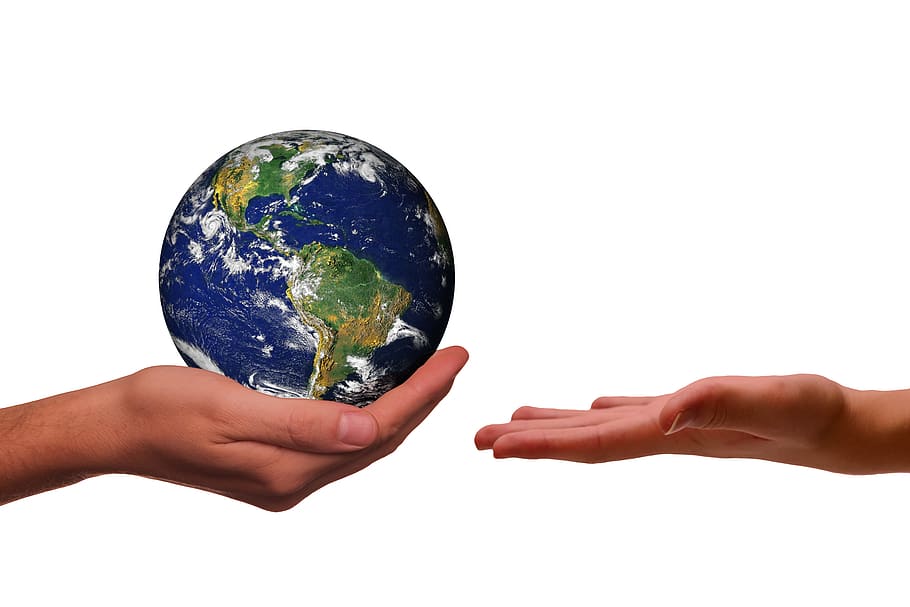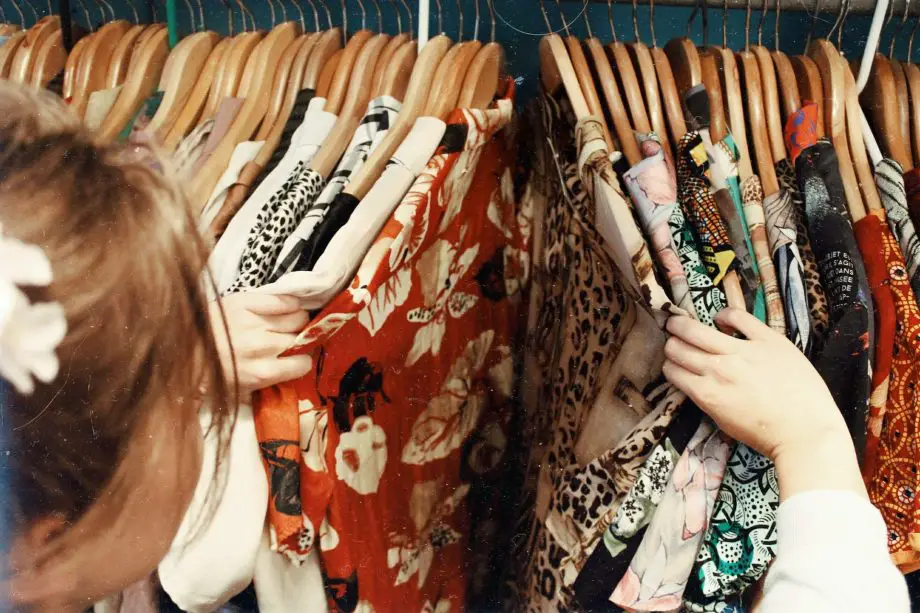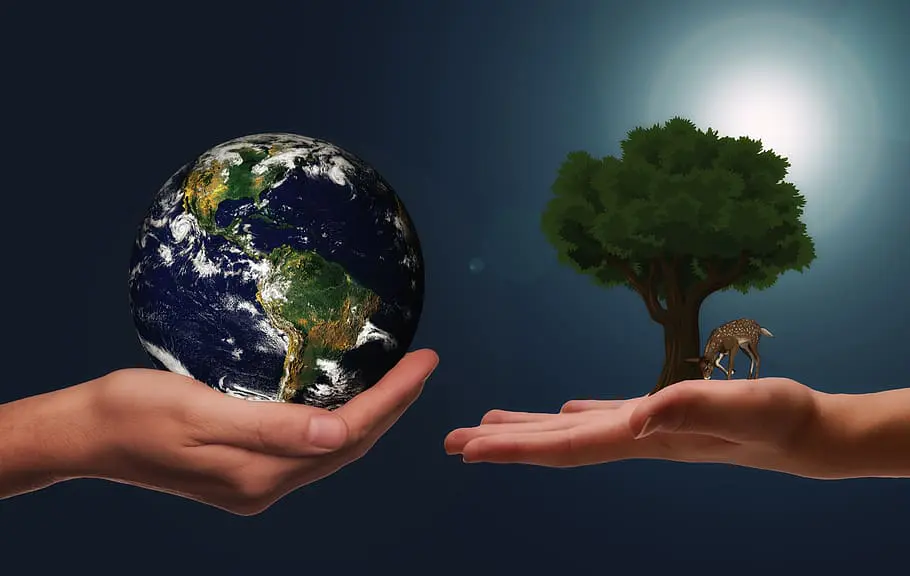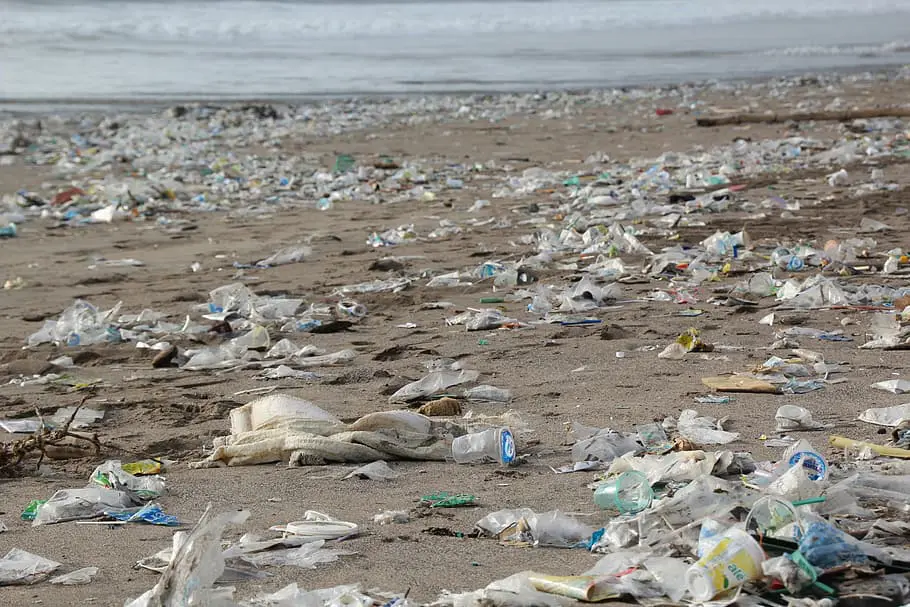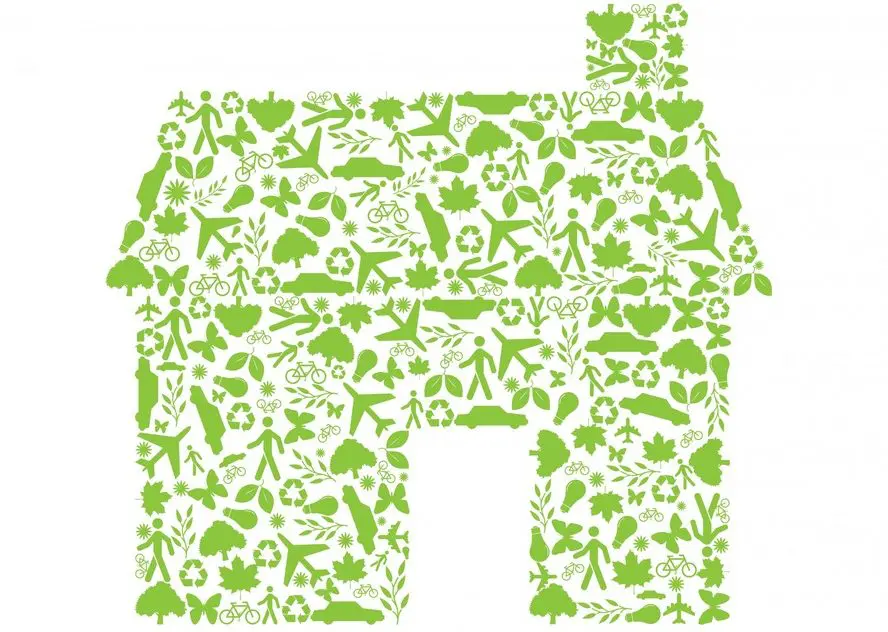
Discover why thrifting is better than fast fashion in our latest blog post. Uncover the environmental, economic, and social benefits of secondhand shopping!
Ever wondered why thrifting is better than fast fashion? Well, you’re not alone. Thrifting has become the new black.
As we become more conscious of our impact on the world, and green living many of us are swapping the high street for the thrift store.
And it’s not just about snagging a bargain. It’s about making choices that are kinder to our planet, our wallets, and our communities.
So, let’s dive into the world of secondhand shopping and uncover the many reasons why thrifting is winning the fashion game.
Why Thrifting is Better than Fast Fashion
Welcome to the fascinating world of thrifting, a place where fashion meets sustainability!
If you’ve ever asked yourself why thrifting is better than fast fashion, you’re about to find out.
In this post, we’ll explore the environmental, economic, and social benefits of thrifting.
We’ll delve into how thrifting reduces waste and pollution, the hidden costs of fast fashion, and the role of thrifting in community building.
Plus, we’ll examine the rising trend of thrifting and its influence on the fashion industry.
So, buckle up and get ready for an enlightening journey into the realm of secondhand shopping!
Definition of Thrifting and Fast Fashion
Let’s start by defining our terms. Thrifting, in its simplest form, is the act of shopping at thrift stores, garage sales, flea markets, and similar places where items, especially clothing, are sold secondhand.
It’s like a treasure hunt, where you can find unique, vintage, and gently used items at a fraction of their original cost.
Fast fashion, on the other hand, is a term that describes the rapid production of high volumes of clothing by mass-market retailers.
These clothes are often inexpensive and trendy, mimicking the styles seen on fashion runways or worn by celebrities.
However, the speed and volume of production often come at a cost, including poor working conditions, low-quality materials, and significant environmental impact.
Brief Overview of the Article
Now that we’ve defined our terms, let’s talk about what we’re going to cover in this article.
We’re going to dive deep into the reasons why thrifting is a better choice than fast fashion.
We’ll explore the environmental, economic, and social impacts of both thrifting and fast fashion.
We’ll also look at how thrifting has become a trend in itself, influenced by social media and fashion influencers.
Plus, we’ll answer some frequently asked questions about thrifting and fast fashion.
So, whether you’re a seasoned thrift shopper or a fast fashion enthusiast looking to make a change, there’s something in this article for you. Let’s get started!
The Environmental Impact of Thrifting vs Fast Fashion
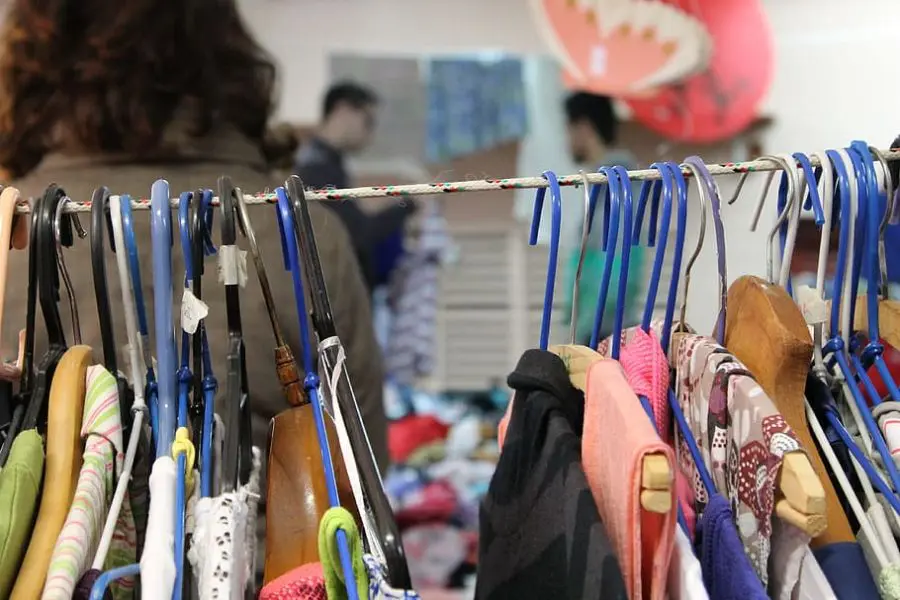
Now, let’s talk about something that’s on everyone’s mind these days namely the environment.
When it comes to the fashion industry, the impact on our planet is significant.
But how does thrifting stack up against fast fashion in this regard? In this section, we’re going to delve into the environmental implications of both thrifting and fast fashion for green living.
We’ll explore how your choice of shopping can either contribute to or help alleviate some of the environmental issues we face today.
So, if you’ve ever wondered about the footprint your wardrobe leaves on the planet, keep reading – this section is for you!
How Thrifting Reduces Waste and Pollution
Let’s kick things off with a look at how thrifting can help reduce waste and pollution.
When we buy secondhand, we’re giving a new life to items that might otherwise end up in a landfill.
This not only reduces waste but also cuts down on the demand for new products.
And less demand means fewer resources used and less pollution from manufacturing processes.
Plus, by choosing to thrift, we’re also reducing the amount of packaging waste that comes with new items. So, every thrifted item is a win for our planet!
The Environmental Cost of Fast Fashion
On the flip side, let’s consider the environmental cost of fast fashion.
Fast fashion brands often produce new collections every few weeks, leading to a high turnover of clothing.
This rapid production cycle requires a significant amount of resources, including water and energy.
Additionally, the manufacturing processes often involve harmful chemicals, which can pollute waterways when not properly managed.
And let’s not forget about the waste as many fast fashion items end up in landfills after being worn only a few times.
It’s clear that the environmental cost of fast fashion is high.
Case Study: The Impact of Thrifting on Plastic Waste Reduction
To illustrate the environmental impact of thrifting, let’s consider a case study on plastic waste reduction.
Clothing made from synthetic materials like polyester, nylon, and acrylic release microplastics into the water every time they’re washed.
These microplastics can end up in our oceans, harming marine life.
By choosing to buy secondhand, we can reduce the demand for new synthetic garments and, consequently, the amount of microplastic pollution.
So, thrifting doesn’t just save you money – it can also help save our oceans!
The Economic Benefits of Thrifting
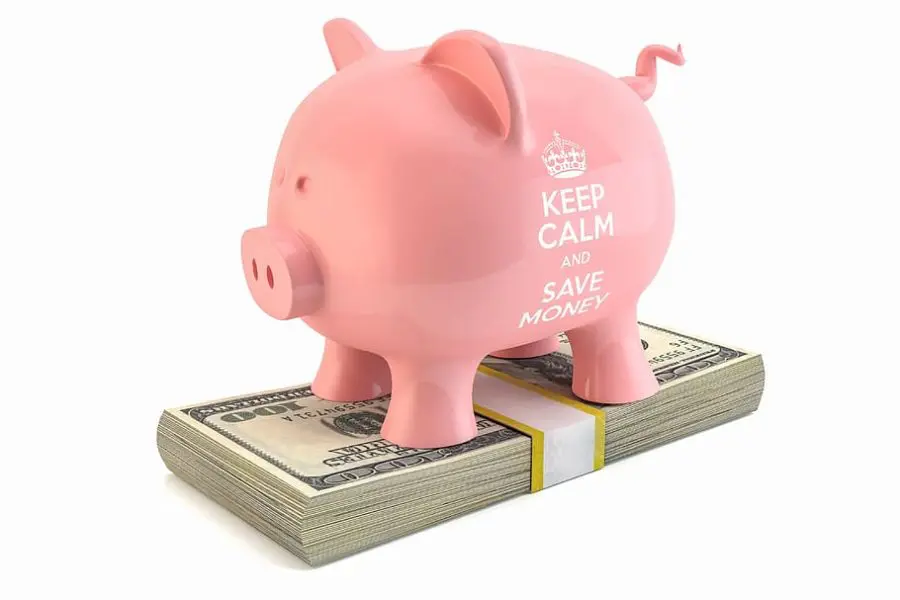
Let’s switch gears and talk about something that directly affects all of us, our wallets.
Thrifting isn’t just a win for the environment; it’s also a win for your budget.
But how does it compare to fast fashion when it comes to economic benefits?
In this section, we’re going to delve into the financial aspects of thrifting versus fast fashion.
We’ll explore how thrifting can be a more affordable option and the hidden costs of fast fashion that you might not be aware of.
So, if you love a good deal (and who doesn’t?), stick around – this section is sure to pique your interest!
Affordability of Thrift Shopping
First up, let’s talk about the affordability of thrift shopping. One of the most immediate benefits of thrifting is the potential for great deals.
From vintage finds to barely worn designer pieces, thrift stores can be a goldmine for budget-conscious fashion lovers.
And it’s not just about the price tag. When you thrift, you’re investing in quality pieces that have stood the test of time, rather than disposable fast-fashion items that might not last a season.
So, your money goes further, and your wardrobe lasts longer – it’s a win-win!
The Hidden Costs of Fast Fashion
Now, let’s consider the hidden costs of fast fashion. At first glance, fast fashion might seem like the more affordable option.
After all, those low price tags can be pretty tempting. But when you factor in the short lifespan of many fast fashion items, things start to look a bit different.
If you’re constantly replacing clothes that wear out or go out of style, the costs add up.
Plus, there’s the environmental cost to consider like pollution and resource depletion can have long-term economic impacts.
So, while fast fashion might seem cheap, it can be costly in the long run.
Case Study: The Economic Impact of Thrifting
To illustrate the economic benefits of thrifting, let’s look at a case study.
Consider a typical thrift store shopper who buys half of their clothes secondhand.
Over a year, they could save hundreds of dollars compared to buying all new clothes, especially if they’re replacing fast fashion purchases with thrifted finds.
Plus, the money spent at thrift stores often supports local businesses and charities, so those savings can have a positive impact on the local economy.
It’s clear that thrifting can be a smart move, both for your wallet and your community!
The Social and Ethical Aspects of Thrifting vs Fast Fashion

Now that we’ve covered the environmental and economic aspects, let’s delve into the social and ethical dimensions of thrifting versus fast fashion.
Fashion isn’t just about what we wear; it’s also about the values we express and the impact we have on society.
In this section, we’ll explore the ethical issues associated with fast fashion and how thrifting can promote more ethical consumption.
We’ll also look at the role of thrifting in community building. So, if you’re interested in how your shopping habits can reflect your values and shape your community, this section is for you!
Ethical Issues in Fast Fashion
Let’s start with the ethical issues in fast fashion. Fast fashion’s rapid production cycle often relies on low-wage labor in countries where workers’ rights may not be fully protected.
This can lead to poor working conditions and unfair wages for the people who make the clothes.
Additionally, fast fashion’s environmental impact raises ethical questions about resource depletion and pollution.
When we buy fast fashion, we’re often indirectly supporting these practices.
How Thrifting Promotes Ethical Consumption
On the other hand, thrifting can promote more ethical consumption.
When we buy secondhand, we’re not contributing to the demand for new clothes and the associated labor and environmental issues.
Instead, we’re extending the life of existing items and supporting a more circular economy.
Plus, many thrift stores are run by charities or social enterprises, so our money goes towards supporting good causes.
In this way, thrifting allows us to make more conscious, ethical choices with our shopping.
The Role of Thrifting in Community Building
Finally, let’s consider the role of thrifting in community building. Thrift stores can be community hubs, bringing together people of all ages and backgrounds.
They can provide affordable clothing options for those in need, and many also offer volunteer opportunities.
Plus, the act of donating to a thrift store can help us feel more connected to our community, knowing that our unwanted items can find a new home and support a good cause.
So, thrifting isn’t just good for our wallets and our planet – it’s also good for our communities!
The Trend of Thrifting and Its Influence on Fashion

Let’s now turn our attention to the fashion world itself. Thrifting isn’t just a practical choice for our wallets and our planet; it’s also become a major trend influencing the fashion industry.
In this section, we’ll explore how thrifting has risen in popularity, how social media and influencers are driving this trend, and how this shift towards secondhand shopping is impacting fast fashion brands.
If you’re curious about the intersection of fashion trends and sustainable practices, you’ll find this section particularly interesting. Let’s dive in!
Thrifting as a Fashion Trend
First, let’s look at thrifting as a fashion trend. Over the past few years, thrifting has shed its old image and emerged as a popular, even trendy, way to shop.
It’s not just about finding a bargain anymore. It’s about the thrill of the hunt, the joy of finding unique pieces, and the satisfaction of creating a stylish and sustainable wardrobe.
Plus, with vintage and retro styles coming back into fashion, thrift stores are the perfect place to find authentic pieces that fit these trends.
The Influence of Social Media and Influencers on Thrifting
Next, let’s consider the influence of social media and influencers on thrifting.
Platforms like Instagram and TikTok are full of thrift haul videos, DIY upcycling tutorials, and style inspiration featuring thrifted pieces.
Influencers are showing their followers that thrifting is not only sustainable but also a way to create a unique and stylish wardrobe.
This visibility has played a significant role in promoting thrifting and making it more mainstream.
The Impact of Thrifting on Fast Fashion Brands
Finally, let’s discuss the impact of thrifting on fast fashion brands.
As more and more consumers turn to secondhand shopping, fast fashion brands are feeling the pressure.
Some are starting to offer more sustainable options or take-back programs for used clothes.
Others are facing criticism for their business practices. While it’s too early to say what the long-term impact will be, it’s clear that the rise of thrifting is challenging the fast fashion industry to change and adapt.
Why Thrifting is Better than Fast Fashion FAQs
 As we’ve explored the world of thrifting, you might have a few questions popping up. And you’re not alone!
As we’ve explored the world of thrifting, you might have a few questions popping up. And you’re not alone!
Many people are curious about the ins and outs of thrifting and how it compares to fast fashion.
In this section, we’ll tackle some of the most frequently asked questions about thrifting and fast fashion.
From the potential of thrifting to stop fast fashion to the reasons behind thrifting’s popularity, we’ve got you covered.
So, if you’ve got questions, stick around – we’ve got answers!
Q: Can Thrifting Stop Fast Fashion?
A: While thrifting alone may not completely stop fast fashion, it can certainly help reduce its impact.
By choosing to buy secondhand, we’re reducing the demand for new items, which can influence the production practices of fast fashion brands.
Plus, the more people embrace thrifting, the more pressure there is on the fashion industry to adopt more sustainable practices.
Q: Why is Thrift Shopping Better?
A: Thrift shopping has several advantages over buying new.
It’s often more affordable, it’s better for the environment as it reduces waste and extends the life of clothes, and it can be a more ethical choice as it doesn’t contribute to the labor and environmental issues associated with fast fashion.
Plus, thrift shopping can be a fun and rewarding experience as you hunt for unique, vintage, or designer pieces.
Q: Why is Thrifting So Popular Now?
A: There are several reasons why thrifting has become popular.
The rise of environmental consciousness has led many people to seek out more sustainable ways to shop.
The influence of social media and fashion influencers has also played a role, with thrift hauls and upcycling tutorials becoming popular content.
Additionally, the appeal of finding unique and vintage items that stand out from the mass-produced styles of fast fashion has drawn many fashion lovers to thrifting.
Q: Is Thrifting Better Than Buying New Clothes?
A: In many ways, yes, thrifting can be better than buying new clothes.
It’s more environmentally friendly, as it reduces waste and the demand for new production.
It’s often more affordable, as you can find quality pieces at a fraction of their original cost.
And it’s a more ethical choice, as it doesn’t contribute to the labor and environmental issues often associated with new clothing production.
However, it’s also important to note that not all new clothes are created equal and there are brands out there committed to sustainable and ethical practices.
The key is to make conscious, informed choices about where we shop and what we buy.
Why Thrifting is Better than Fast Fashion Conclusion

As we come to the end of our exploration into the world of thrifting versus fast fashion, it’s time to reflect on what we’ve learned.
We’ve delved into the environmental, economic, and social aspects of thrifting and fast fashion, and hopefully, you’ve gained some new insights.
But our journey doesn’t have to end here. In this concluding section, we’ll recap the key points and share some final thoughts on the future of thrifting and fast fashion.
So, whether you’re a seasoned thrifter or just starting to consider a shift away from fast fashion, let’s wrap up this journey together!
Recap of Key Points
Let’s take a moment to revisit the key points we’ve covered.
We started by defining thrifting and fast fashion, setting the stage for our discussion.
We then explored the environmental impact of both, highlighting how thrifting reduces waste and pollution and the environmental cost of fast fashion.
We also delved into the economic benefits of thrifting, including its affordability and the hidden costs of fast fashion.
We discussed the social and ethical aspects, from the ethical issues in fast fashion to how thrifting promotes ethical consumption and community building.
Finally, we looked at the trend of thrifting and its influence on fashion, including its rise as a fashion trend, the role of social media and influencers, and its impact on fast fashion brands.
Final Thoughts on the Future of Thrifting and Fast Fashion
As for the future of thrifting and fast fashion, it’s clear that change is in the air.
The rise of thrifting and the growing awareness of the issues associated with fast fashion suggest a shift towards more sustainable living and ethical consumption.
While fast fashion isn’t likely to disappear overnight, the growing popularity of thrifting shows that many consumers are looking for alternatives.
As more people embrace the benefits of thrifting, we can hope to see a fashion industry that values sustainability, ethics, and community as much as style and trends.
So, whether you’re a thrifting enthusiast or just starting your sustainable fashion journey, remember every choice we make can make a difference.
Here’s to a future of fashion that’s kinder to our planet, our wallets, and our communities!

